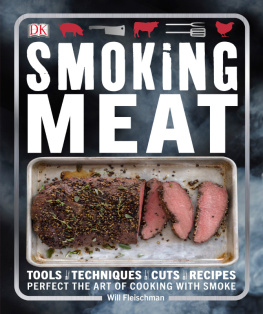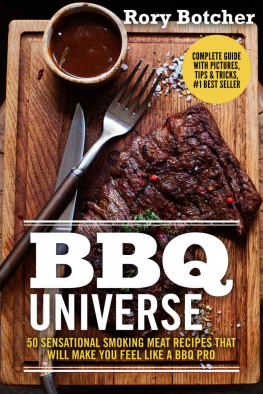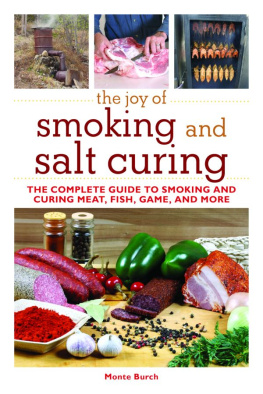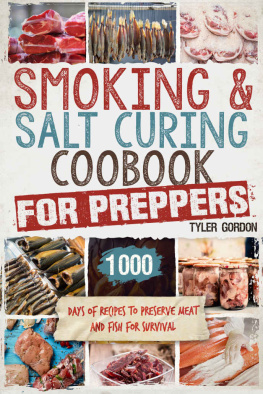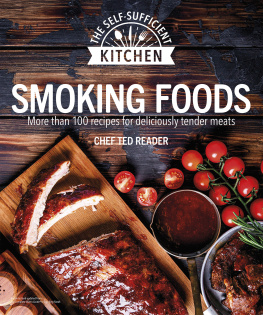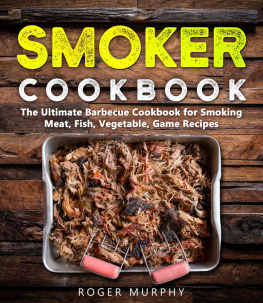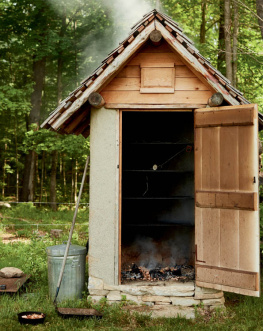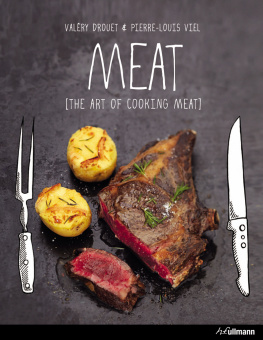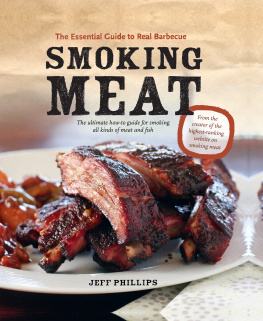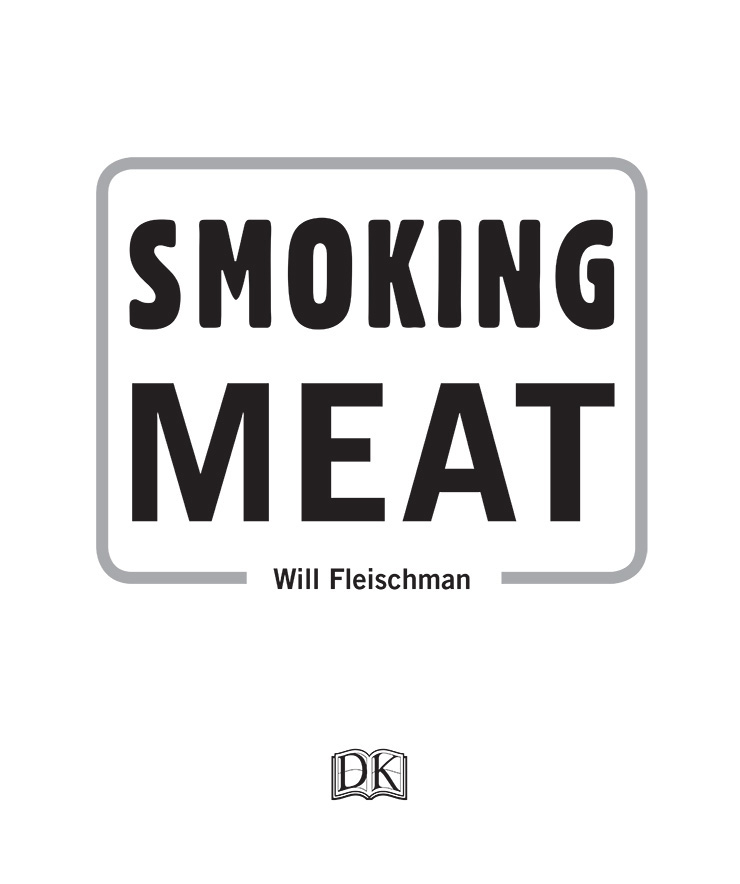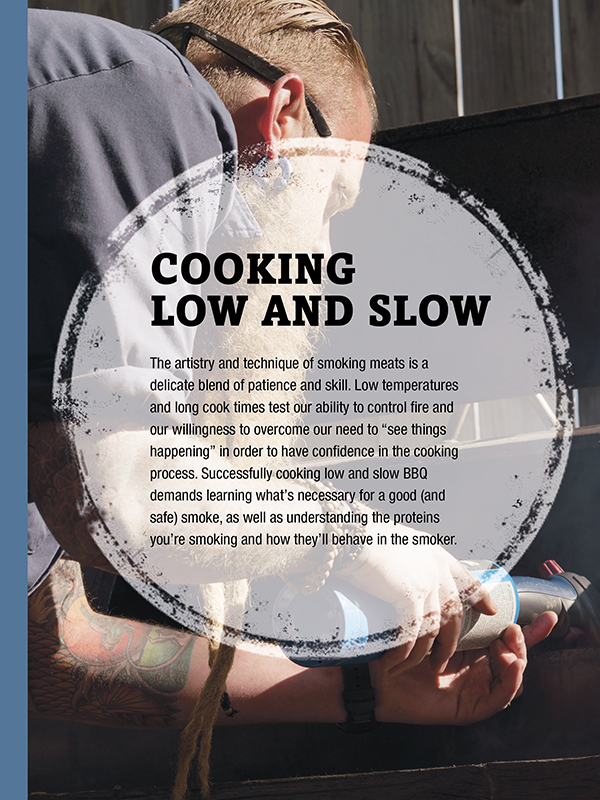Contents
Guide
HOW TO USE THIS eBOOK
Smoking Meat is an easy-to-use eBook featuring 50 fantastic recipes for smoking beef, lamb, pork, poultry, seafood, and sides.
To navigate through the eBook, use the built-in links on the page. These will take you to the relevant chapter or recipe. Throughout the recipe chapters you will find feature pages that give expert tips for achieving smoking success, sourcing quality ingredients, properly preparing foods for smoking, and more.
The recipes are divided into categories so you can easily choose what you want to smoke and learn as you cook. The eBook also contains unique sections to help you choose the right smoker and smoking equipment, how to build and tune a perfect fire, picking the right fuel and wood, seasoning and flavoring foods, and troubleshooting and resolving many of the most common problems that beginning pitmasters often encounter.
Many recipes have step-by-step photos that guide you through the process, as well as a photograph of the finished dish to inspire you and show you exactly what you are aiming for. All of the pictures, illustrations, and tables in this eBook will enlarge when double tapped. To continue reading, simply close the image using the X in the top corner.
Device Settings
We suggest that this eBook looks best on most devices with the following settings:
- White background
- Serif font (e.g., Georgia)
- Scrolling view off
- Justified text alignment (if your eBook reader has this feature)
- Smallest point size (particularly when scanning through the eBook)
- Publisher default setting to be switched on (if your eBook reader has this feature)
INTRODUCTION
Smoking meat and being a BBQ pitmaster arent things I ever envisioned myself doing as a career. I grew up in the heart of Wisconsin, surrounded by lakes, rivers, farms, forests, and fields. Needless to say, BBQ wasnt thennor is it nowone of the predominant culinary traditions in the Badger State. In fact, I dont ever recall even seeing a smoker or eating BBQ until I first came to Texas a little more than 10 years ago. Until then, BBQ was a sauce that went on ribs my mother would boil and then bake. I recall they werent my favorite meal choice and, fortunately, rarely graced our table.
I had my first taste of real BBQsmoked low and slowat a forgettable BBQ joint one afternoon in July. I remember the oppressive heat of that Texas summer more than the BBQ. I could never have imagined that a few years later, Southern Living magazine would recognize me as one of the top 10 pitmasters in the South or that Id get a call to appear on the TV program BBQ Pitmasters. As some have said, maybe it was simply my rugged good looks and beard that got me any attention at all in the BBQ world. Or maybe my successes have come from cooking some outstanding smoked meats and being willing to take creative risks while pushing the envelope of BBQ and embracing the traditions found within. As they say, the jurys still out.
Whatever the case, Ive always sought out bold flavors and new techniques that make an impression on me like a tattoo on my brain. My time spent in Shanghai led me to knowinglyand, at times, unknowinglyeat roasted donkey, cold goose livers, duck brains sucked directly from the skull, pigs lung, and myriad other oddities that totally strengthened the kinds of foods I cook and enjoy. My travels across the United States have taken me to each and every corner of the country to experience a huge variety of cultural culinary traditions, such as roasted goat with native Navajo, salmon jerky on the Pacific Crest Trail, fresh porgy from the Gulf of Mexico, and late-night dirty water dogs in New York City. My desire to find the most off-the-beaten-path spots to eat has brought me friendships with people I dont even share a common language withonly an enthusiasm for good food.
The recipes and techniques presented in this book are derived from these findings, as well as my experiences cooking BBQ professionally and recreationally. While I subscribe to a somewhat puritanical view about BBQletting the natural flavors speak for themselvesthe scope of this book embraces a variety of regional styles that include sauces, mops, and glazes. You should find what works best for you, and then adjust and adaptand, most importantly, enjoy yourself. Because youll have plenty to learn along the way, pay attention and be proud of what you do.
While I subscribe to a somewhat puritanical view about BBQletting the natural flavors speak for themselvesthe scope of this book embraces a variety of regional styles that include sauces, mops, and glazes.
COOKING with SMOKE
Learning how the process of smoking works is the first step to learning how to smoke foods the right way. A little knowledge and know-how will help you understand how to maximize your chances for success and troubleshoot and solve many common problems that can occur as you cook using this ancient technique.
Smoking vs. Grilling
Whats the Difference?
While both smoking and grilling employ fire and can impart a smoky flavor to meats, they differ greatly when it comes to the time and way meats cook. A grill sears and caramelizes proteins using high, direct heat, whereas smoking uses indirect heat and lower temperatures to caramelize but not sear the meat. On a grill, the cooking is done in mere minutes; on a smoker, you rarely spend less than an hour cooking meats. Ultimately, cooking with smoke requires patience and practice.
Smoking gives meats like these jerk-rubbed chicken wings a deep, more complex flavor than what you get from a grill.
what are the Benefits of the Smoke?
While grilling may impart some flavors to meat, smoking imparts much deeper, more intensive flavors to meat that can only be attained over a long, slow cook.
Additionally, the compounds in wood smokespecifically, phenols and phenolic compoundsact as antimicrobials that slow bacterial growth and prevent meat from turning rancid. Wood smoke also contains antioxidants that help preserve proteins.
the science of smoking
How Smoking Actually Cooks
Smoking cooks meat by exposing proteins to low-temperature heat (200F to 300F [93C to 150C]). The smoke component coming from smoldering wood over a fire lends flavors to the meat. While a fire isnt needed to smolder wood (an electric heat source can effectively produce smoke from a small amount of water-soaked wood chips), it might not create the bold tastes you desire that come from using a fire.
Cold Smoking vs. Hot Smoking
There are two types of smoking: cold smoking and hot smoking. Cold smoking is a process of flavoring foods at temperatures under 120F (49C). Typically, items for cold smoking have already been cured, such as bacon or salmon. However, cold smoking isnt limited to traditional foods. Barley and hops are smoked for beers to give them a subtle smoke flavor, and you can even smoke filtered water to make smoky ice cubes for cocktails.

